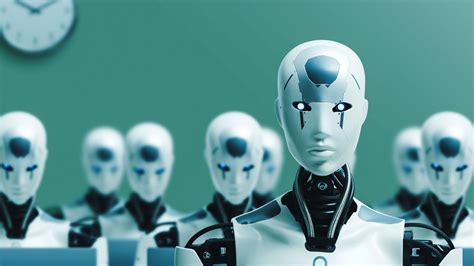self-replication watch Scientists say they've witnessed a never-before-seen type of replication in organic robots created in the lab using frog cells. Download the new Fondation Louis Vuitton app. It offers exclusive sections to prepare, to approach, to visit and to extend your experience. Discover new visit contents around the exhibitions of the moment with lighting of the curators and explanations on the works indicated in the routes.
0 · robots that replicate themselves
1 · kinematic self replication robot
2 · can robots self replicate
Check out the circuit layout and go for a full lap of the Las Vegas GP track in the 360-degree onboard video below. The 3.8-mile street circuit will feature 14 corners and a long straight.
Scientists say they've witnessed a never-before-seen type of replication in organic robots created in the lab using frog cells. Self-replication is not the basis for viewing biomolecular machines as fundamentally dissimilar to machines created by human designers. Instead, self-replication . Summary: Scientists have discovered a new form of biological reproduction -- and created self-replicating living robots. Made from frog cells, these computer-designed . With the help of artificial intelligence, the researchers then tested billions of body shapes to make the xenobots more effective at this type of replication.
Scientists say they've witnessed a never-before-seen type of replication in organic robots created in the lab using frog cells. Self-replication is not the basis for viewing biomolecular machines as fundamentally dissimilar to machines created by human designers. Instead, self-replication stands as one more machine-like attribute of biochemical systems.
Summary: Scientists have discovered a new form of biological reproduction -- and created self-replicating living robots. Made from frog cells, these computer-designed organisms gather single. With the help of artificial intelligence, the researchers then tested billions of body shapes to make the xenobots more effective at this type of replication. AI-designed Xenobots reveal entirely new form of biological self-replication—promising for regenerative medicine. By Joshua Brown, University of Vermont Communications. AI-designed (C-shaped) organisms push loose stem cells (white) into piles as they move through their environment. Credit: Douglas Blackiston and Sam Kriegman.Scientists at UVM, Tufts, and Harvard discovered a new form of biological reproduction—and created self-replicating living robots.
Scientists say they've witnessed a never-before-seen type of replication in organic robots created in the lab using frog cells. Among other things, the findings could have implications for regenerative medicine.
robots that replicate themselves
Xenobots: Building the First-Ever Self-Replicating Living Robots Watch on To create the xenobots in the first place, the team used a supercomputer to create a blueprint for a new life form. In short, the origin of metabolising, self-replicating cells that use symbolic representation in both metabolism and in self-replication is best explained on design, per what we do empirically and analytically know about the origin of complex, symbolically functional entities.Self-replication is any behavior of a dynamical system that yields construction of an identical or similar copy of itself. Biological cells, given suitable environments, reproduce by cell division. During cell division, DNA is replicated and can be transmitted to offspring during reproduction. Scientists say they've witnessed a never-before-seen type of replication in organic robots created in the lab using frog cells.
Self-replication is not the basis for viewing biomolecular machines as fundamentally dissimilar to machines created by human designers. Instead, self-replication stands as one more machine-like attribute of biochemical systems.
Summary: Scientists have discovered a new form of biological reproduction -- and created self-replicating living robots. Made from frog cells, these computer-designed organisms gather single.
With the help of artificial intelligence, the researchers then tested billions of body shapes to make the xenobots more effective at this type of replication.
kinematic self replication robot
can robots self replicate
AI-designed Xenobots reveal entirely new form of biological self-replication—promising for regenerative medicine. By Joshua Brown, University of Vermont Communications. AI-designed (C-shaped) organisms push loose stem cells (white) into piles as they move through their environment. Credit: Douglas Blackiston and Sam Kriegman.Scientists at UVM, Tufts, and Harvard discovered a new form of biological reproduction—and created self-replicating living robots.
Scientists say they've witnessed a never-before-seen type of replication in organic robots created in the lab using frog cells. Among other things, the findings could have implications for regenerative medicine.
Xenobots: Building the First-Ever Self-Replicating Living Robots Watch on To create the xenobots in the first place, the team used a supercomputer to create a blueprint for a new life form.
In short, the origin of metabolising, self-replicating cells that use symbolic representation in both metabolism and in self-replication is best explained on design, per what we do empirically and analytically know about the origin of complex, symbolically functional entities.
burberry women shirt

dior bag pink
Support and Posture Enhancement: Fajas can provide additional support to the core and back muscles during workouts, aiding in posture improvement. This support may contribute to a more stable and aligned body position, potentially enhancing exercise effectiveness and reducing the risk of injury. Improved Circulation:
self-replication watch|can robots self replicate


























